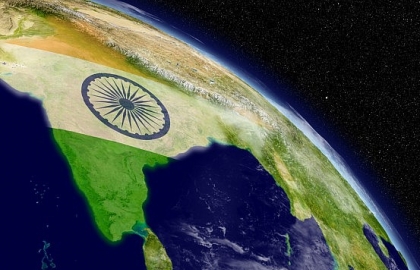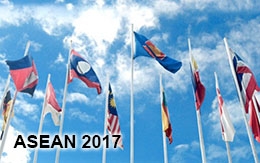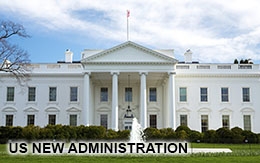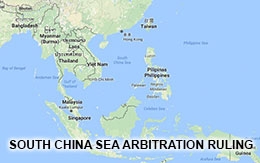India’s Maritime Strategy In The Indo-Pacific
Why is India paying increased attention to the maritime domain?

Though India has always been seen as a continental power, it is worth remembering that it has a long coastline of 7516.6 kilometers. In the past, Indian influence and customs spread by the sea route to Southeast Asia, East Asia and many other parts of the world. The island of Bali, in Muslim-majority Indonesia is still a Hindu-majority island whereas the state philosophy of Indonesia is Pancasila, which is derived from the Sanskrit words “panca” meaning five and “sila” meaning principles.
So why is India paying increased attention to the maritime domain?
Firstly, India’s options on land are limited—on its west, it has been having tensions with Pakistan while on the other hand, it has a border dispute with China, to its north.
Secondly, China has been increasingly trying to wade into what India has traditionally seen as its own backyard - the Indian Ocean region.
Thirdly, the Indian Ocean is an important part of India’s “Act-East Policy” which aims at re-invigorating its age-old ties with Southeast and East Asia. Though this policy was launched during the early 1990’s as the “Look-East Policy”, the present Modi government has put a renewed emphasis on the same and renamed it as the “Act-East Policy”. In March 2015 PM Modi visited the Indian Ocean island countries of Mauritius, Seychelles, Sri Lanka, he outlined that “We seek a future for the Indian Ocean that lives up to the name of SAGAR — Security and Growth for All in the Region”.
Fourthly, the Indian Navy is critical for the security of India’s sea lines of communications (SLOCs) in the region. Given India is a net energy importer, hence for the continued growth of its economy it is important that it is able to get uninterrrupted supplies of energy from the Middle East and other parts of the world.
The growing of the Indian navy
India has set up a tri-services command in the strategically important Andaman and Nicobar islands which lie only around 90 nautical miles from Indonesia’s western-most Aceh province. It has bought the former Russian carrier Admiral Gorshkov, which has now entered service as the INS Vikramaditya. New Delhi is also building its first indigenous aircraft carrier, INS Vikrant, which will put it in an elite league of nations able to build their own aircraft carrier.
Besides, India has been conducting joint naval exercises with a host of countries in the Indo-Pacific region, particularly the US. Currently, Japan has been made a regular part of these exercises.
Earlier this year, the Indian Navy held an International Fleet Review off Visakhapatnam on India’s eastern seaboard where naval vessels from over 50 countries across the world participated. As Prime Minister Narendra Modi noted in his speech at the International Fleet Review, “about half of world's container traffic; and close to nearly one-third of world's cargo traffic passes through” the Indian Ocean region. The Navy has also played a key role in the evacuation of Indian nationals from various war zones, like in Yemen in April last year.
India and the South China Sea
Though India does not have any claims in the South China Sea region, it has a keen interest in seeing that the sea lines of communication in the region are kept free. During the visit of the US President Barack Obama to India as the Chief Guest during India’s Republic Day celebrations in January 2015, the two countries issued a joint declaration wherein they affirmed “the importance of safeguarding maritime security and ensuring freedom of navigation and over flight throughout the region, especially in the South China Sea.” This is in keeping with the US’ “pivot to Asia” enunciated by President Obama. Interestingly, President Obama has become the first US President to visit India twice during his presidency.
Though India is not an ally of the US, in recent years, it has been increasingly moving closer to the US with the signing of agreements like the LEMOA (Logistics Exchange Memorandum of Agreement) which allows the militaries of the two nations to use each others’ facilities. India has also been importing military hardware from the US, which has increased the interoperability between the US and Indian armed forces.
India’s state-owned Oil and Natural Gas Corporation (ONGC) Videsh Limited has been drilling off the coast of Vietnam in the South China Sea, brushing aside protests from Beijing. Earlier this year, it received an one-year extension to explore Block-128 in Vietnamese territorial waters and this license will be valid until June 15, 2017.
Major challenges for the Indian Navy
However, at the same time, the Indian Navy faces many challenges.
Firstly, it needs to undergo a substantial amount of modernisation. Though it is being done gradually, the pace has been slow. It has also been reeling under a series of accidents involving its submarine fleet.
Secondly, the Navy accounts for a very small share of India's total defence budget. The total share of the Navy in the 2015-16 defence budget was just 16% as compared to the proportion of 53% for the Army.
Thirdly, the country still needs a more coherent strategy on how to tackle the growing Chinese influence in the Indian Ocean region. Beijing has embarked on the Maritime Silk Road initiative, which has rankled many observers in India. In addition, China’s so called “string of pearls” strategy has seen it help build ports in India’s backyard, at Gwadar (Pakistan), Hambantota (Sri Lanka), Chittagong (Bangladesh) and Kyaukpyu (Myanmar).
Fourthly, New Delhi has to move towards greater indigenisation of its defence production. However, the Indian government has embarked on an ambitious programme called “Make In India”, which has however not yet shown tangible results on the defence front, with several projects running behind schedule.
The road ahead
It was in December 2004 that India along with many other countries in its neighbourhood suffered from a devastating tsunami, bringing home the threat of non-traditional security threats. In addition, other non-traditional security threats like human smuggling, drug trafficking and climate change also represent new kinds of security threats for India. New Delhi has also suffered from maritime terrorism when terrorists came by sea and attacked India’s commercial capital of Mumbai in November 2008.
In October last year, India released its latest maritime strategy document, “Ensuring Secure Seas”, which expands India’s primary area of interest to include “the Gulf of Oman, the Gulf of Aden and their littoral regions, the Southwest Indian Ocean, including Indian Ocean Region island states and the East Coast of Africa littoral regions”, clearly reflecting India’s growing profile in the region.
As India moves to an increasingly multi-aligned foreign policy stance, it is clear that it will have to devote much greater attention to the maritime domain than ever before. Many countries in India’s neighbourhood want and expect India to play a more active role in the maritime arena and this is something that New Delhi would do well to ponder over and act upon.
Dr Rupakjyoti Borah is currently a Research Fellow with the Tokyo-based Japan Forum for Strategic Studies. He specialises on India’s strategic ties with countries in the Indo-Pacific region, especially India-Japan relations and its maritime interests. He has been an Assistant Professor of International Relations, Pandit Deendayal Petroleum University, India and a Visiting Fellow at the University of Cambridge. The views expressed are personal.










